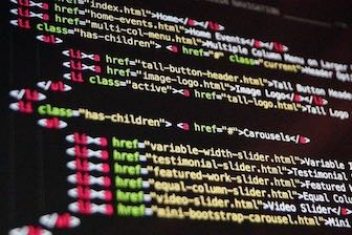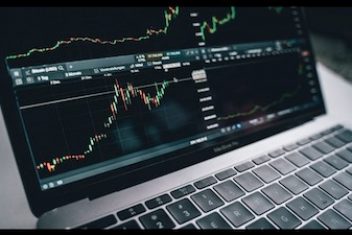In this era of digital transformation, businesses of all kinds are spending significantly more on data-driven artificial intelligence/machine learning (AI/ML) procedures than in the past.
These assist companies in gaining a competitive edge, generating new income streams, and promoting effective corporate operations. To make sense of their data, enterprises first looked to the public cloud, which reduces infrastructure complexity while offering high availability and quick scaling of computing resources for big data AI/ML applications. Nevertheless, transporting the data to the cloud became a new challenge as a result of the expansion of data at the edge.
Use Cases of Edge Computing
Edge computing’s decentralized approach to data processing is transforming several sectors. Here are a few of the most common applications for edge computing:
- IoT Devices: Real-time data processing and analysis are made possible by edge computing IoT devices, lowering bandwidth consumption and latency.
- Autonomous cars: By making crucial judgments instantly, edge computing improves the responsiveness of autonomous vehicles.
- Video Surveillance: Local processing of video feeds enables quicker identification and reaction to security concerns
- Industrial Automation: To ensure accuracy and prevent accidents, real-time computing is crucial for operating machines, robotics, and processes.
- Telemedicine: By processing and transmitting data in real-time, remote medical equipment allows for remote patient monitoring, consultation, and operation.
- Intelligent Cities: Edge computing helps to handle a range of urban functions, such as trash management, public safety, and traffic control.
Read: 4 Tips To Ensure Successful IoT Software Development
What Makes Edge Computing So Vital?
Large-scale pre-processing of data at the edge was challenging until recently, but the advent of AI/ML has made robust data analytics at the edge possible. Processing as much IoT data as possible on-site and then moving a portion of it to the cloud for deeper analytics is now a more economical and successful strategy. As a result, distant devices respond much faster, and device data may be used to derive deeper, faster insights. By bringing real-time computing capacity to places it would not have been possible, it has helped to free up bottlenecks in data centers and on networks. This is essential for Edge use cases where real-time data is required.
Analysis and low-latency network connections, such as remote surgery, self-driving automobiles, and industrial automation. The deployment of 5G and 6G infrastructure, which will boost the 5Vs of data—velocity, volume, value, variety, and integrity—will also cause the global edge computing industry to expand rapidly. This boosts cybersecurity protections, lowers complexity, and saves money. Cloud service providers (CSPs) drove the early market impetus for edge infrastructures by virtualizing their networks. Nevertheless, in the longer term, mobile and home consumer use cases are anticipated to account for 35–40% of the need for edge computing and infrastructure worldwide and the use of hyper converged storage systems improves the efficiency and scalability of edge computing deployments.
Read: Top 10 Reasons Why Your Business Needs to Embrace the Cloud
Advantages of Cutting-Edge Computing
Here are the advantages of cutting-edge computing:
- Improved operational efficiency: By processing massive amounts of data quickly at or close to the areas where it is collected, edge computing circumvents centralized cloud or data center locations and improves daily operations. This makes it possible for businesses to quickly or almost instantly glean insightful information from the data to support critical decision-making.
- Increased worker productivity: Edge computing provides the information needed for employees to carry out their tasks effectively. Using automation and predictive maintenance lowers disruptions and readily avoidable errors.
- Lower IT costs: By processing data locally as opposed to in the public cloud, businesses may minimize their IT expenditures. Before being transported to the cloud, redundant data is removed at or close to the collection site, reducing the cost of cloud transmission, processing, and storage.
- Function in remote areas: Edge computing facilitates the use of data gathered at isolated places with sporadic internet access or constrained bandwidth. The pertinent data may be sent to a central data center for processing and analysis as soon as internet access is established.
- Data sovereignty: Companies must abide by the data sovereignty regulations of the nation or area in which their consumer data is gathered, processed, stored, and used. Complying with these rules may become challenging when data is moved to the cloud across national borders. By processing and keeping data inside its borders, Edge computing allows firms to be sure they’re adhering to local data sovereignty requirements.
The Relationship Between Edge Computing & Cloud Computing
Edge computing and cloud computing are two complementary concepts in the field of distributed computing, providing diverse yet interrelated goals. Cloud computing is the distribution of computer services—including storage, processing, and networking—via the internet on a centralized infrastructure, allowing users to access resources remotely and on demand. Edge computing, on the other hand, includes processing data closer to its source of creation, at the “edge” of the network, rather than depending only on faraway data centers.
While cloud computing provides scalability, cost-efficiency, and centralized management, edge computing overcomes the limitations of cloud-centric architectures by lowering latency, increasing bandwidth usage, and improving reliability for applications that require real-time responsiveness or operate in environments with intermittent or limited connectivity.
Edge and cloud computing have a mutually beneficial relationship, with each enhancing the capabilities of the other. Edge devices, such as sensors, IoT devices, and mobile phones, create massive volumes of data that may be analyzed locally for quick insights or action. However, resource restrictions or the necessity for centralized control mean that not all processing can or should be done at the edge. Cloud computing enhances edge computing by offering scalable storage, powerful analytics, and complicated processing capabilities for data acquired by edge devices.
Read: Best Practices for a Successful Cloud Migration Strategy
Furthermore, edge computing expands the reach of cloud services to the network edge, allowing dispersed applications to use both local and centralized resources. This hybrid method improves resource consumption, and performance, and allows new use cases across a variety of industries, including autonomous cars, industrial automation, healthcare, and retail.
In essence, the link between edge and cloud computing represents a distributed computing continuum in which data and processing tasks flow fluidly between local edge devices and centralized cloud infrastructure to satisfy the demands of current applications and services.
Conclusion
For enterprises hoping to utilize edge computing fully, hyperconvergence at the edge presents an attractive option. Hyperconvergence increases scalability, streamlines management, and boosts edge environment performance by combining networking, storage, and computation into a single platform.
Hyperconvergence at the edge, which may simplify processes, cut expenses, and provide real-time insights, has the potential to spur innovation in a variety of sectors, including manufacturing, telecommunications, retail, and healthcare. Adopting hyper-converged infrastructure is a smart move to meet the changing demands of contemporary enterprises and seize new possibilities in the digital world as edge computing needs only grow.
If you like the content, we would appreciate your support by buying us a coffee. Thank you so much for your visit and support.



